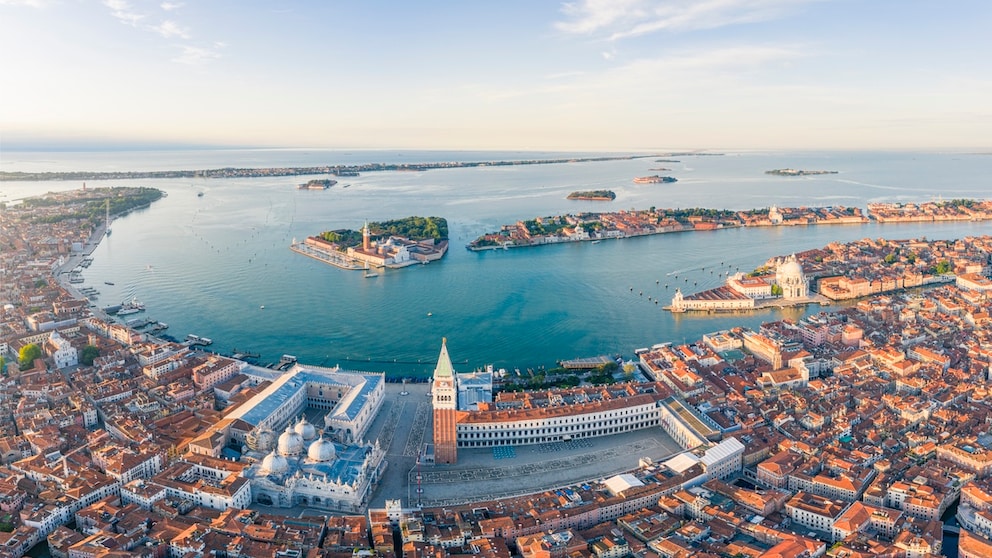December 31, 2024, 5:26 am | Read time: 3 minutes
The lagoon city of Venice has been threatening to sink for years. But now a new island has actually appeared off Italy’s coast. The main reason for the new strip of land between the island of Sant’Erasmo and the entrance to the Lido harbor is a system designed to protect Venice from flooding.
A new island has emerged in the lagoon of Venice, just off the Italian city, that is increasingly threatened with sinking. Between the island of Sant’Erasmo and the entrance to the Lido harbor, the previously fragile Bacàn sandbank has become permanently visible thanks to the MOSE flood protection system, as reported by the Frankfurter Rundschau newspaper, among others.
260-Meter-Long New Island off Italy
The 260-meter-long and 10-meter-wide island of Bacàn is not completely new. Originally, it was a sandbank that always appeared during the summer months for years and was eroded again by wind and waves in winter. However, this has now apparently changed, as engineer Giovanni Cecconi explains in a social media post. Bacàn is now a stable land mass on which the first vegetation has already settled.
Cecconi attributes this development to the MOSE (Modulo Sperimentale Elettromeccanico) storm surge barrier, which was installed in 2020 to protect Venice from flooding. “Thanks to MOSE, a new island has been created,” writes Cecconi, the former head of the protection project.
Bacàn Has Long Been a Refuge for Venetians
Venetians in particular were initially rather skeptical about the MOSE flood protection program. Even when Bacàn was still an annual sandbank, it was considered the secret paradise of the people of Venice. As it could only be reached by boat, it acted as a refuge when the crowds of tourists thronged the beaches in the lagoon. When MOSE was introduced, there was great concern that the natural area could be permanently destroyed by the flood protection system.
Instead, the island has grown steadily since the system went into operation in 2020. This is mainly due to the fact that MOSE stops waves of a height more than 110 centimeters, meaning that the layers of the sandbank are no longer eroded. As a result, organic material has become trapped on the island, and the first plants and vegetation resembling the salt marshes of Venice’s lagoon have begun to grow. According to “C40 Cities“, these are particularly important there to combat the erosion of land mass and the emission of CO₂.

Hundreds of Buildings Already Destroyed Experts Warn! Historic Coastal Town Sinks into the Sea

A hidden gem in Italy This City Is as Beautiful as Venice but Much Cheaper and Less Crowded

In the South Pacific Longer than a blue whale! Researchers discover the world’s largest coral to date
Some Are Skeptical About the Island off Italy
Giovanni Cecconi’s conviction that the MOSE flood protection system will have a positive impact on the currents in the Venice lagoon and, therefore, also on Bacàn is not shared by all scientists in Italy. Andrea D’Alpaos, Professor of Hydrology at the University of Padua, for example, expresses his concerns. In his opinion, MOSE does not fundamentally contribute to the growth of salt marshes, the characteristic lagoon landscapes. Rather, the artificial island of the MOSE has changed the current conditions, allowing sediments to be deposited.
Pierpaolo Campostrini, Director of Corila (Consortium for the Management of Lagoon Research), is also reluctant to make any statements without further data. He told the “Corriere Del Veneto“: “Bacàn shows us how dynamic the Venice lagoon is. It would be important to set up a special observatory to better study these changes.”


